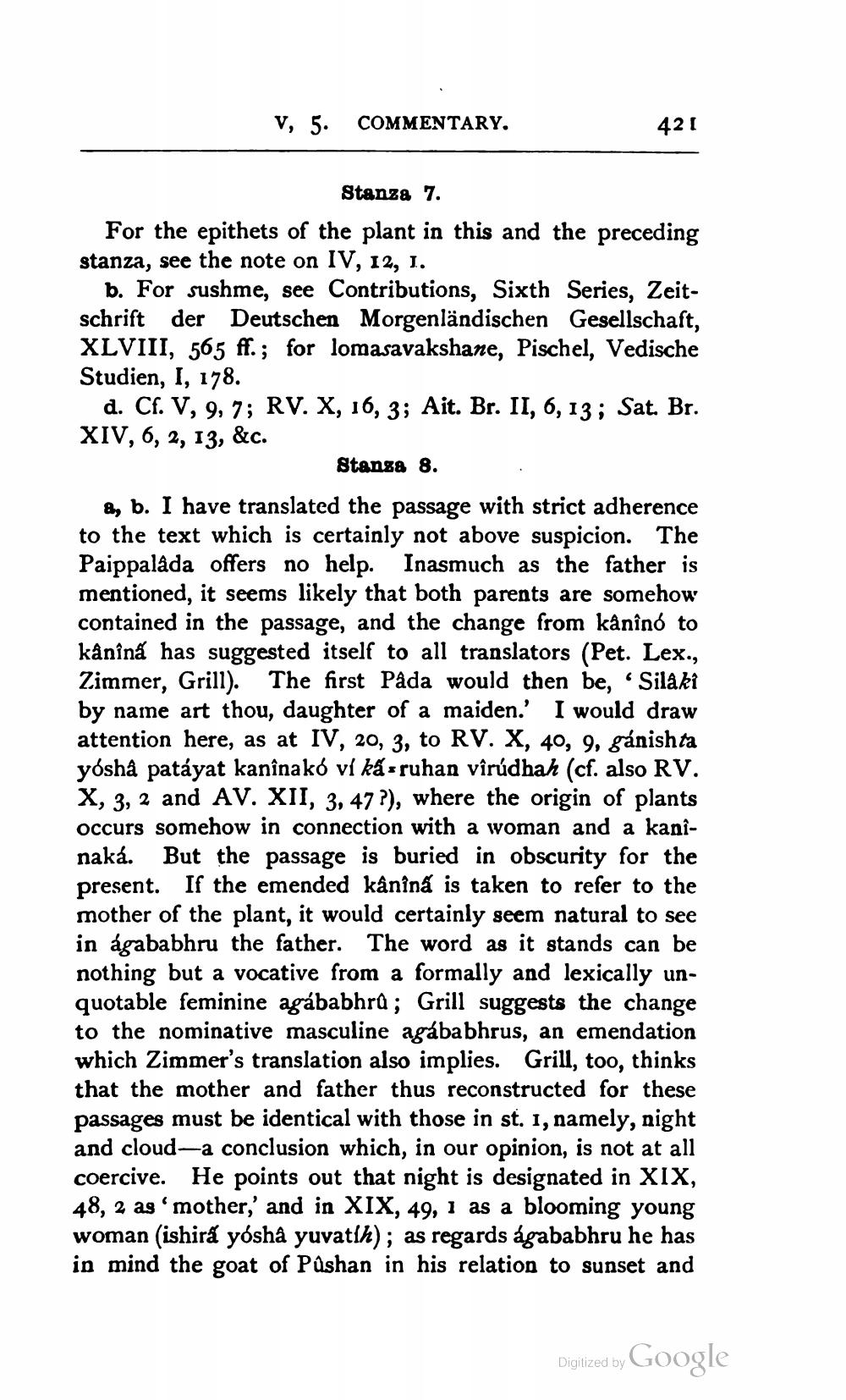________________
V, 5. COMMENTARY.
421
Stanza 7.
For the epithets of the plant in this and the preceding stanza, see the note on IV, 12, I.
b. For sushme, see Contributions, Sixth Series, Zeitschrift der Deutschen Morgenländischen Gesellschaft, XLVIII, 565 ff.; for lomasavakshane, Pischel, Vedische Studien, I, 178.
d. Cf. V, 9, 7; RV. X, 16, 3; Ait. Br. II, 6, 13; Sat. Br. XIV, 6, 2, 13, &c.
Stanza 8.
a, b. I have translated the passage with strict adherence to the text which is certainly not above suspicion. The Paippalâda offers no help. Inasmuch as the father is mentioned, it seems likely that both parents are somehow contained in the passage, and the change from kânînó to kânîna has suggested itself to all translators (Pet. Lex., Zimmer, Grill). The first Påda would then be, 'Silâkî by name art thou, daughter of a maiden.' I would draw attention here, as at IV, 20, 3, to RV. X, 40, 9, gánishta yosha patayat kanînakó ví kấ-ruhan vîrúdhah (cf. also RV. X, 3, 2 and AV. XII, 3, 47?), where the origin of plants occurs somehow in connection with a woman and a kaninaká. But the passage is buried in obscurity for the present. If the emended kânîna is taken to refer to the mother of the plant, it would certainly seem natural to see in ágababhru the father. The word as it stands can be nothing but a vocative from a formally and lexically unquotable feminine agábabhrú; Grill suggests the change to the nominative masculine agábabhrus, an emendation which Zimmer's translation also implies. Grill, too, thinks that the mother and father thus reconstructed for these passages must be identical with those in st. 1, namely, night and cloud-a conclusion which, in our opinion, is not at all coercive. He points out that night is designated in XIX, 48, 2 as 'mother,' and in XIX, 49, 1 as a blooming young woman (ishira yósha yuvatík); as regards ágababhru he has in mind the goat of Pûshan in his relation to sunset and
Digitized by
Google




